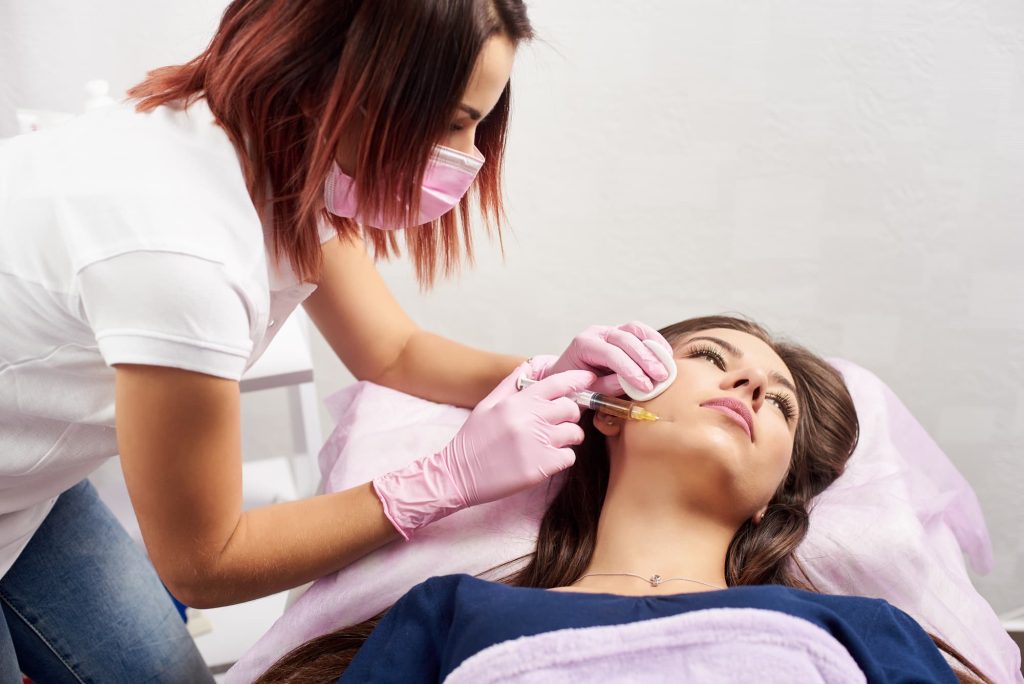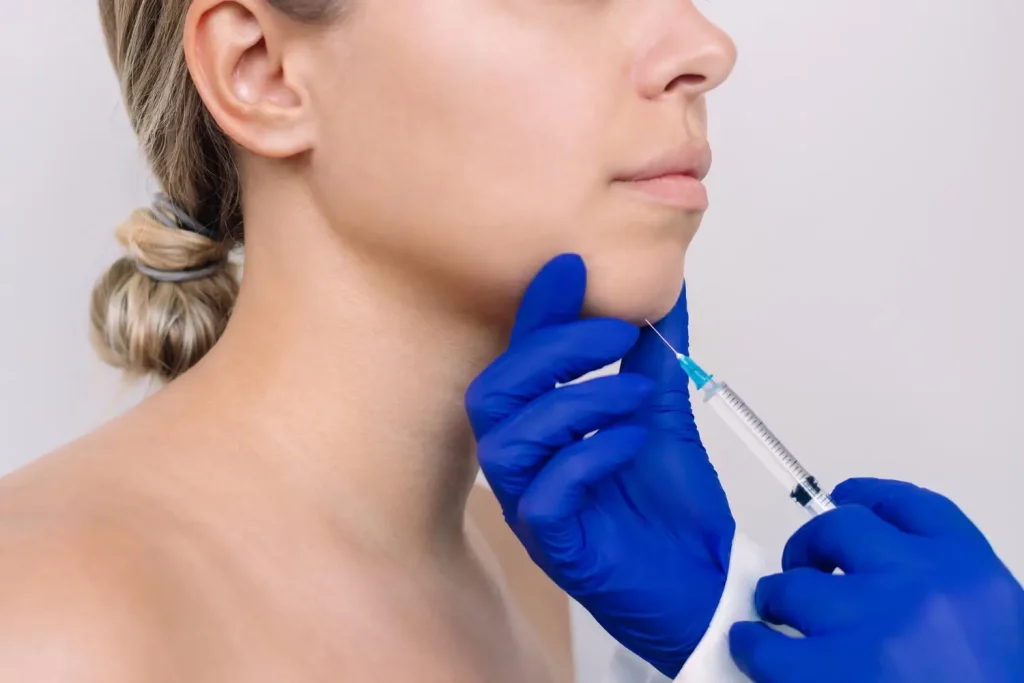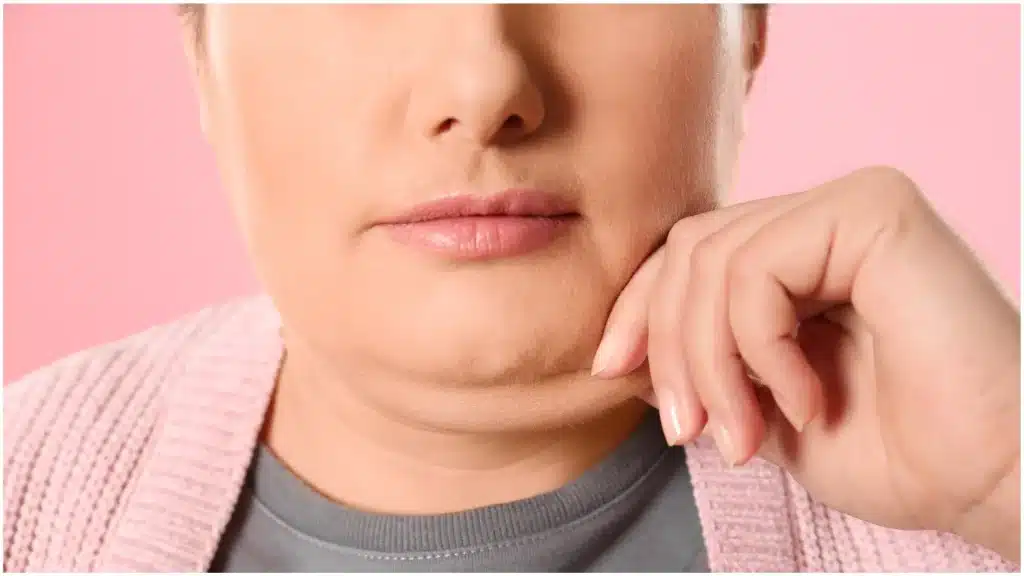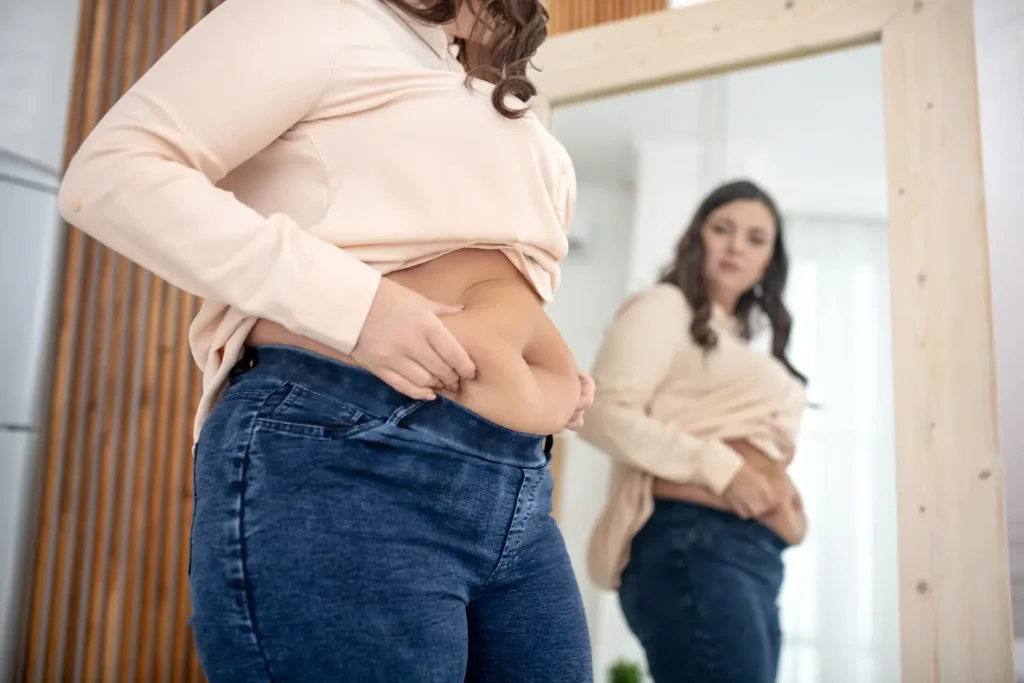Dermal fillers are a perfect solution for addressing signs of aging, promising smoother skin and enhanced facial contours. Restylane, a popular choice among injectable fillers, is often sought after for its transformative effects. But how long does Restylane last? Let’s find out.
What Is Restylane?
Restylane is the generic name of a line of preparations for biorevitalization and contouring developed in Q-Med labs. This Swedish company is a part of Galderma, which holds leading positions in aesthetic cosmetology.
Restylane fillers have one common feature – biosynthesized hyaluronic acid of the highest degree of purification. This excludes the presence of protein impurities and minimizes allergic or inflammatory reactions. The products do not disrupt the natural skin metabolic processes but optimize them.
The name Restylane often refers to this line’s first and most popular filler. It eliminates medium wrinkles and folds on the forehead and the nasolabial area. There are other fillers for specific uses, but more on them later.
Restylane Treatment
Restylane is a brand of hyaluronic acid (HA) dermal fillers. Hyaluronic acid, naturally present in the body (in the skin, connective tissues, and fluids surrounding the eyes), has a primary role in the processes of retaining moisture, supplying hydration, and supporting tissue elasticity.
Hyaluronic Acid Depletion and Aging
Time, coupled with sun exposure and genetic factors, the skin experiences a gradual decline in its hyaluronic acid content. This decrease in hyaluronic acid contributes to sagging skin, wrinkles, and creases.
Mechanisms of Action
Restylane functions by replenishing the hyaluronic acid that diminishes over the years. Its injection into the skin serves as a volumizing and hydrating agent, functioning through the following mechanisms:
- Volume Restoration: The injected Restylane gel augments volume in the treated region. This process aids in filling wrinkles, lines, and depleted areas, yielding a more even and youthful appearance.
- Hydration: Hyaluronic acid possesses a distinctive capability to attract and retain water molecules. Upon introduction of Restylane into the skin, it binds with water molecules present in adjacent tissues, generating a plumping effect. This boost in hydration enhances skin texture and elasticity.
- Stimulation of Collagen Production: The presence of Restylane within the skin has the potential to stimulate collagen synthesis. Collagen, a fundamental protein contributing to skin structure, receives a boost in production. This increased collagen formation can lead to longer-lasting enhancements in skin texture and overall appearance.
- Biodegradation: Over time, the body’s natural metabolic processes progressively break down and metabolize the introduced hyaluronic acid. Consequently, the effects of Restylane are not permanent, necessitating additional treatments to uphold the desired outcomes.
How Long Does the Effect Last?
How long Restylane lasts varies depending on the specific formulation used, the area of treatment, the individual patient’s metabolism and lifestyle, and the volume injected.
Here’s a breakdown of how long you can typically expect Restylane to last in different treatment areas:
- Lips: Restylane used for lip augmentation might last around 6 to 12 months. The lips tend to metabolize filler more quickly due to the constant movement in the area.
- Nasolabial folds and marionette lines: These areas have moderate movement, and Restylane dermal fillers can last around 9 to 12 months in these regions.
- Cheeks and midface: Because there’s less movement in these areas, Restylane can last longer, often around 12 to 18 months.
- Under-eye hollows and tear troughs: The duration can be similar to nasolabial folds, lasting around 9 to 12 months.
- Jawline and chin: Depending on the individual, results can also last around 12 to 18 months in these areas.
Restylane Product Line
Restylane
Restylane is a versatile hyaluronic acid dermal filler used for various cosmetic purposes. It helps smooth wrinkles, enhance lips, and restore facial volume that diminishes with age.
Duration: The effects of Restylane generally last between 6 to 12 months.
Restylane Vital
Restylane Vital is designed to improve skin hydration, texture, and elasticity. It involves injecting filler into the skin’s surface to enhance overall skin quality.
Duration: The effects of Restylane Vital typically last around 6 to 9 months.
Restylane Defyne
Restylane Defyne is formulated to treat moderate to deep facial wrinkles. It provides natural-looking results while maintaining facial expressions.
Duration: The effects of Restylane Defyne generally last between 6 to 9 months, making it suitable for longer-lasting results.
Restylane Volyme
Restylane Volyme is used for restoring volume and contouring specific areas of the face, including the cheeks, chin, and jawline. It addresses volume loss and enhances facial harmony.
Duration: The effects of Restylane Volyme typically last around 6 to 9 months, depending on the treatment area and individual factors.
Restylane Lyft
Restylane Lyft is primarily employed for cheek augmentation, midface volume restoration, and addressing moderate to severe facial wrinkles. It can also improve nasolabial folds.
Duration: The effects of Restylane Lyft generally last between 9 to 12 months, making it suitable for longer-lasting volume enhancement.
Restylane Refyne
Restylane Refyne is designed to treat mild to moderate facial wrinkles and lines, allowing for natural movement and expression. It’s an ideal option for areas with dynamic wrinkles.
Duration: The effects of Restylane Refyne typically last around 6 to 9 months, providing a balance between wrinkle reduction and natural facial mobility.
Pre-Treatment Preparation
Proper preparation before undergoing Restylane treatment is essential to achieving the best possible results and ensuring a smooth procedure. Here are the recommended practices that doctors should advise their patients to follow:
One Week Before Treatment
- Refrain from blood-thinning medications, such as aspirin, ibuprofen, and naproxen.
Two Days Before Treatment
- Stop using anti-aging products containing tretinoin (Retin-A), retinoids, retinol, and glycolic acid at least two days before your treatment. These products can increase skin sensitivity and the risk of irritation during the injection.
- Refrain from waxing, tweezing, or shaving the treatment areas within 48 hours of your appointment. This helps prevent skin irritation or potential infection at the injection sites.
One Day Before Treatment
- Limit alcohol consumption for 24 hours before the treatment. Alcohol may increase bleeding and bruising risk during the injection.
Treatment Day
- Wash your face thoroughly with soap and water, and avoid wearing makeup or skincare products in the treatment areas. This ensures a clean and suitable surface for the injection procedure.
Restylane Side Effects
Restylane treatments offer cosmetic enhancements, but like any medical procedure, they also have potential risks and side effects. These include:
- Pain or itching;
- Swelling;
- Bleeding;
- Bruising;
- Infection;
- Allergic reaction;
- Headache;
- Tenderness.
Restylane Aftercare
After undergoing Restylane filler treatments, patients often ask,”How long do Restylane results last?” Healthcare providers can offer guidance and recommendations to help patients maintain and prolong the effects of their Restylane fillers. Here’s how to advise your patients:
- Healthy Lifestyle Choices
Encourage patients to adopt a healthy lifestyle, including a balanced diet, regular exercise, and hydration. A healthy lifestyle can improve overall skin health and help prolong the effects of the filler.
- Sun Protection
Emphasize the importance of sun protection. Direct sun exposure can break down collagen and elastin, affecting Restylane’s longevity.
- Skincare Routine
Recommend a skincare routine that includes gentle cleansing, moisturizing, and using products containing antioxidants and hyaluronic acid. These can help maintain skin health and hydration, complementing the effects of the filler.
- Avoid Smoking and Alcohol
Advise patients to avoid smoking and excessive alcohol consumption. These habits can contribute to premature aging and affect the final Restylane results.
- Avoid Harsh Treatments
Instruct patients to avoid aggressive skincare treatments, such as chemical peels or laser therapies, as they can diminish the longevity of Restylane fillers.
- Regular Check-ups
Schedule regular follow-up appointments with patients to monitor the results of Restylane and address any concerns. This also provides an opportunity to recommend touch-up treatments if needed.
Conclusion
Restylane offers practical solutions for cosmetic enhancement. With its focus on rejuvenation and contouring, Restylane utilizes purified hyaluronic acid to restore volume, hydration, and elasticity to the skin. While the treatment provides remarkable results, patient commitment to a healthy lifestyle, sun protection, and proper skincare routines is vital for maintaining and prolonging Restylane’s lasting effects. Regular follow-ups and tailored advice from healthcare professionals will ensure that patients enjoy the benefits of Restylane for an extended period, enhancing their confidence and appearance.
References
- Edwards PC, Fantasia JE. Review of long-term adverse effects associated with the use of chemically-modified animal and nonanimal source hyaluronic acid dermal fillers. Clin Interv Aging. 2007;2(4):509-519. doi:10.2147/cia.s382
- Dover JS, Carruthers A, Carruthers J, Alam M. Clinical Use of RESTYLANE [published correction appears in Skin Therapy Lett. 2005 Mar;10(2):9]. Skin Therapy Lett. 2005;10(1):5-7.
- Huang SH, Tsai TF. Safety and Effectiveness of Hyaluronic Acid Fillers With Lidocaine for Full-Face Treatment in Asian Patients. J Drugs Dermatol. 2020;19(9):836-842. doi:10.36849/JDD.2020.10.36849/JDD.2020.5374



















